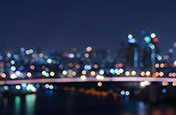Put your car photography into top gear.
Automotive photography helps people celebrate and share their rides. Get advice on how to make car photos shine and bring out the best in unique automobiles.
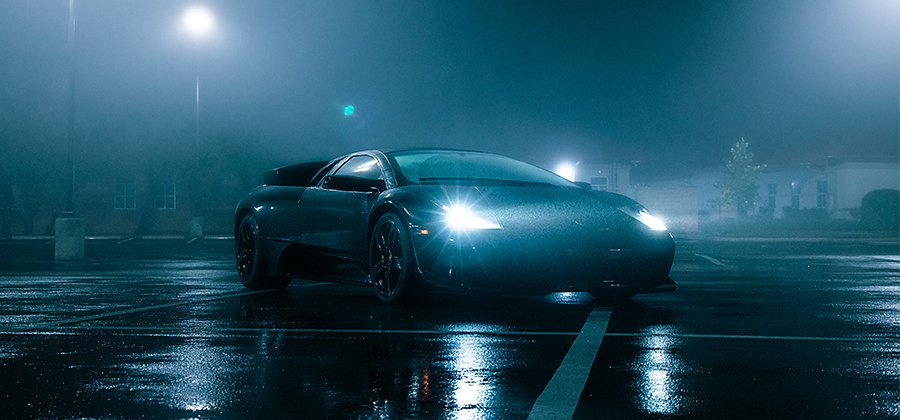
Image by Aedan Petty
The fast and the photogenic.
From vintage muscle cars to a luxurious Mercedes or the newest Lamborghini, people are passionate about cars. To capture everything from automotive advancements to car culture meetups, professional car photography has picked up speed to become an art of its own. It’s a love letter to rides and whips, a mix of product shots and ways to immortalize the space where craft meets engineering.
“You’re trying to find the right angles on the car. You’re trying to match it with the correct background, the right light — there’s a lot that goes into it,” says photographer Aedan Petty.
Whether you’re into cars for the speed, the looks, or the souped-up modifications, car photography can put you in the pits with beautiful machines and the like-minded people who love them.
“Car photography captures what car enthusiasts really love — the styling, the aggressive looks, all the modifications that people do, and people’s builds,” says Petty. “It’s a way to capture the beauty of the machine, and it’s also about capturing action, whenever you get moving shots.”
Car photographers need to start with networking.
You can take great car photos of any kind of automobile. But if you want the exciting experience of shooting luxury cars or special vintage models, you need to connect with their owners. And that’s all about cultivating and showcasing an appreciation for these vehicles. “If you’re doing automotive photography, you definitely need to be passionate about cars,” says Petty.
Unless you already have friends with Ferraris, Porsches, or modified Mazda racing models, you’ll want to head out to car shows and meet other car enthusiasts, car owners, and people in the industry, from garage owners to specialty product salespeople. Find car shows or vintage vehicle meetups near you and bring your camera.
How to get car photography clients.
“A lot of people are scared to reach out to car owners, because they’re afraid people might not want to shoot with them,” says photographer Brooks Li. “But that doesn’t matter.” Going to car club meetups or car shows with your camera will attract car owners who want to work with you.
Car owners are typically very proud of their machines, and that’s common ground you can bond over with any car lover. Anyone who can help car owners get great shots of their baby should find it easy to make those connections.
“I suggest people go to local car shows, like Cars & Coffee. Talk to owners. All of them are super friendly. That’s how I started,” says Li. “Be as outgoing as possible and try your best to get more practice in.”
How to prepare for an automotive photography shoot.
Once you’ve made the right connections and have scheduled a shoot, a successful session will require some research on timing and location. Talk with your client about the make, model, and color of their car so you can plan ahead. They may have special modifications and details they’d like you to capture during the shoot.
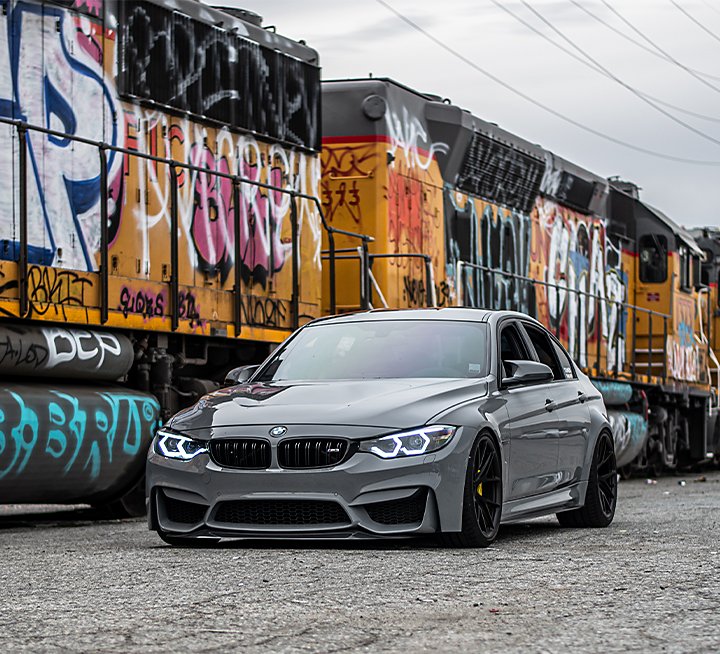
Image by Brooks Li
Pick a location that complements the car.
Different terrains and settings will work better for different cars. If you’re photographing a Jeep that does well off the beaten path, you might want to take it onto some rocky terrain, safety permitting. On the other hand, a car built low to the ground might look best on a smooth city street or in front of an old brick wall by a factory.
The color of the car will also help determine the best setting for the shoot. “Black and white cars are really the only ones that you can take pretty much anywhere. If you’re dealing with a special color, those get tougher,” says Petty. “I’d say the hardest paint coat on a car is probably purple. Purple is a really challenging color to capture. You have to find the right lighting.”
Aim for a background that offers contrast to the car’s hue and shade. “Darker cars look great against brighter backgrounds,” says Li. “If I’m shooting cars that are brighter — like an orange car — I would shoot in a darker spot, either during sunset or where there’s a shadow.”
Plan your shoots for golden hour.
The time of day can make a big difference. As with most types of outdoor photography, direct sunlight can lead to glare, drastic shadows, or washed-out colors. Shoot cars during golden hour — the hour after sunrise and before sunset — to limit the intense glare and shadows caused by midday sun. If you have to shoot midday, work around harsh light with the help of trees and buildings that provide shade over the car.
Helpful gear to have on hand.
To be a successful car photographer, you’ll want to master different angles and types of shots. Here’s some gear to have on hand at a car shoot to help you capture everything from beautiful BMWs to fast-moving cars like street-racing Chevy Camaros.
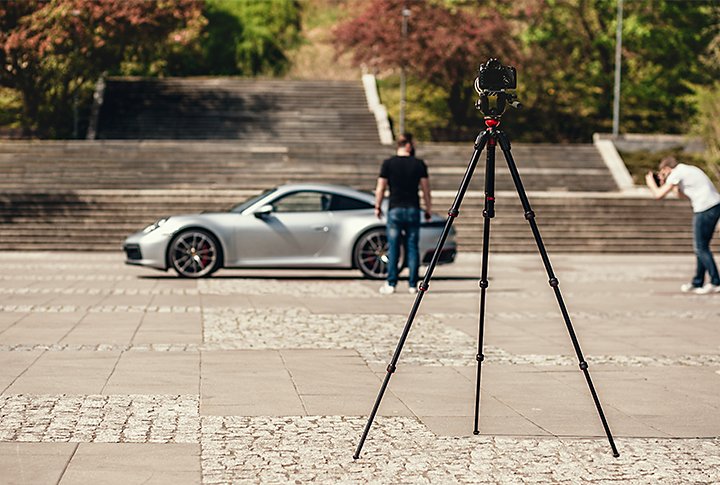
The basics
A tripod to capture steady shots is always a valuable tool, especially to keep your camera steady at night. It’s also worth looking into a basic reflector kit to manipulate the sunlight.
The lenses
“I shoot with a 24mm to 70mm focal length lens. It’s super versatile and super easy. You’ve got your wide-angle — then you've got the telephoto on the other end of it,” suggests Petty. “And I’d say 35mm and 50mm are the most popular for automotive photography. That’s what I see a lot of people starting out with.”
Flashes
For outside shots, a reflector to capture natural light sources and direct them at the car may be all you need. But car photography often includes shots of car interiors as well. “I have a camera flash, and I also have a light bar,” says Petty. “It’s super helpful to have a flash just because that really lights up the interior and shows the colors of different details.”
But make sure you use a softer flash so you get good lighting without harsh shadows. “Don’t use too powerful a flash, because then you’ll get white lines on all the leather,” explains Petty. “You want to try and keep the interior looking smooth.”
Light limiters
Most car paint catches and reflects light, which can be a problem without the right equipment. A neutral density filter limits light, almost like a pair of sunglasses for your lens. You can also use a circular polarizer, which specializes in reducing glare.
“If you don’t have a circular polarizer, you’re going to have a bunch of reflections coming off the windshield and the side of the car that definitely won’t look as good,” Petty says.
Cleaning tools
Unless you’re shooting an off-road vehicle, dirt and smudges aren’t going to make a nice addition to any car shots. Make sure to bring polishing cloths and detailing spray. “If you’re getting up close to the wheels, sometimes just moving the car a couple feet means you get dust and dirt,” explains Petty. “Definitely have that on hand just in case you need to clean.”
Don’t forget these tips for good car shots.
Come ready to capture all the angles.
Make sure to get the classic car “poses” before you get creative. Shoot the car from straight on at eye level, get side views, and capture shots at 45-degree angle views of each corner of the car.
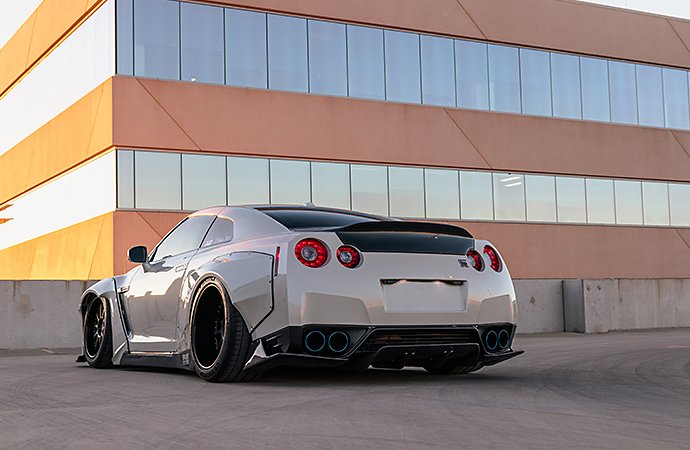
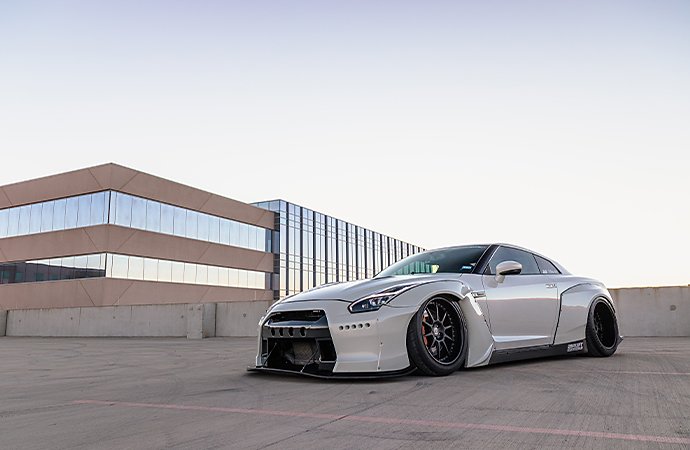
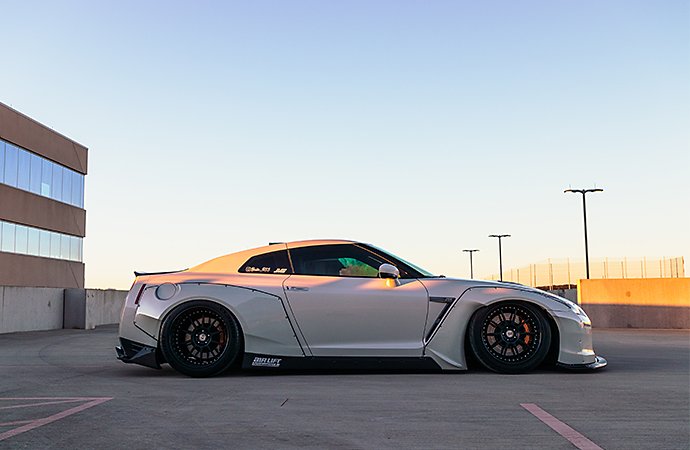
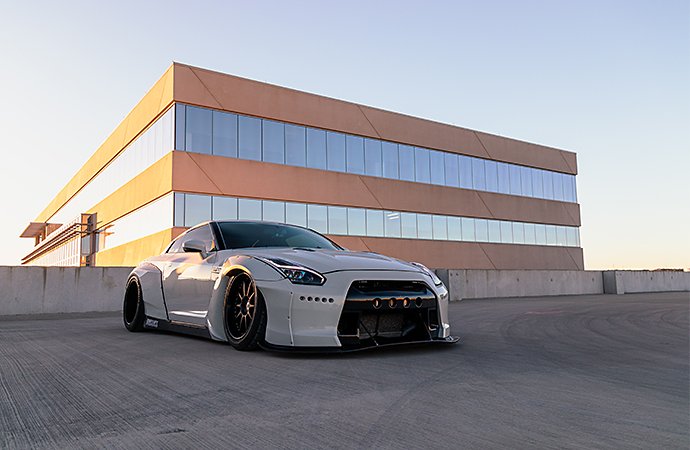
Images by Aedan Petty
“One of the biggest tips l give beginners is to know the angles of cars,” Petty explains. “Every car looks best at a three-quarters angle. That’s kind of like the go-to shot. You can practice with any car — it doesn’t even have to be a fancy car. It could be your own personal daily car. Just play around with the angles and find which ones look best.”
Once you’ve captured good angles of the entire vehicle, move on to cropped shots. You can shoot the side of the car from a low angle that starts at the front wheel, for example. Next, dive into the detail shots like close-ups of the headlights, front badge, arrow bits, side skirt, and mirrors — get in tight on any details that make the car unique.
If the location isn’t right or is affecting your ability to follow the rule of thirds (or other photo composition best practices), play around with where and how the car is positioned. Keep the scenery and your composition in mind. Just because your subject isn’t human, it doesn’t mean you can’t have it (and the owner) work with you to get the right pose.
Inside information on interior shots.
Whether it’s because of tinted windows or closed doors, the inside of a vehicle is often dim. A soft flash or light can be helpful. Don’t be afraid to open doors and windows to let more light in as well. And adjust your camera settings accordingly.
“For interior shots, most of the time, you need a slower shutter speed, because it’s darker,” Li says. “You don’t really have a lot of extra light to work with. And you likely can’t use a tripod, so you will need to master how to hold your camera steady.”
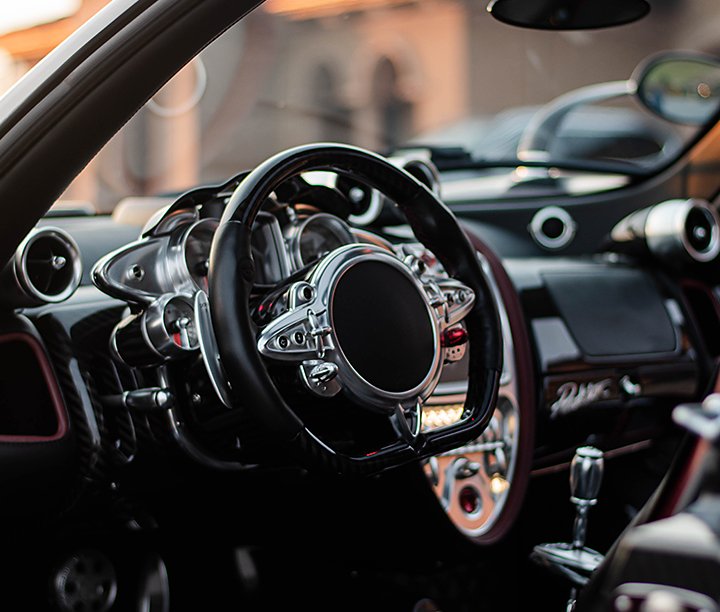
Image by Brooks Li
Interior shots can be easier with cars that have a back seat, but for two-seater vehicles, you might have to do some tricky camera placement to get the positioning that you want. You can also try taking interior shots from the outside — roll the windows down or open the door, and take it through the window.
“Don’t be afraid to raise the ISO, because the interior does get dark,” Petty says. “Knowing your camera is important, and knowing what ISO you can go up to in certain situations without getting too much noise and grain is important.”
Detail shots are crucial for interior images. Capture the steering wheel, the stitching on the seats, and any other special features. And don’t forget to snap shots of what’s under the hood too. Car fans love shots of stylish details, but images of the engineering that makes cars run is also key.
Photograph cars a quarter mile at a time.
While many car photos are of parked vehicles, you may want to capture cars as they showcase their muscle. You can take great shots of cars on the road by riding in another car. Set up a shoot with two different car owners. Have one drive you as you take photos of the other, and then switch. Shooting from a moving vehicle can lead to motion blur via camera shake, so aim to find some smooth roads for these shoots.
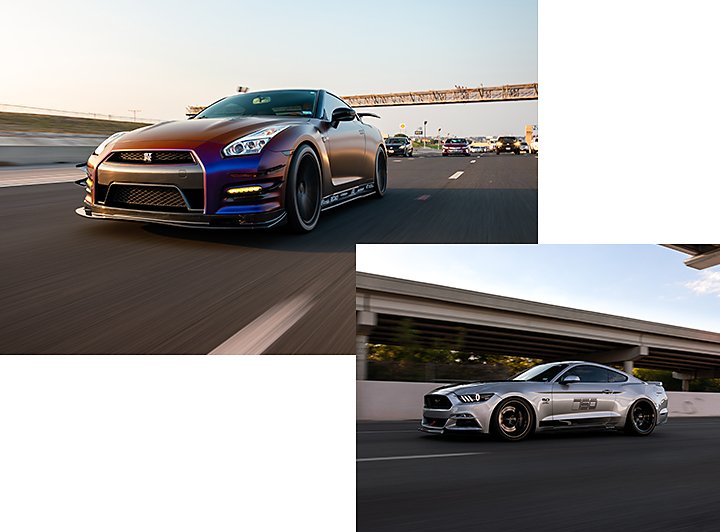
Images by Aedan Petty
If you’re taking photos of moving cars from the finish line or another stationary position, panning photography is a great skill to learn so you can capture cars in motion. Panning techniques will help you focus on a moving subject, keeping it in focus, to deliver a still image that highlights motion with a blurred background.
Organize and fine-tune your shots in Adobe Photoshop Lightroom.
To find the perfect shots of any vehicle, you may have to sift through a number of photos. Lightroom makes it easy to organize your work and find your favorites. You can also apply filter-like Lightroom presets of your best edits to entire batches from the same vehicle’s shoot.
“In post, I play around with the image. I make custom edits to the car and the location,” Petty says.
You can also edit out distracting elements in your post-production work. “A lot of the time, I’ll take out different poles and things in the background,” Petty explains. Don’t let objects you can easily edit out draw attention away from your subject.
If lighting on car windows makes them too bright, you can darken them with a transparent gray brush. This will help even out the glass without making it look unrealistic.
You won’t know what types of edits you may need until you start shooting. After the rubber meets the road, you’ll learn what tips, tricks, and adjustments work for you. Get out there and snap as many pics of slick vehicles as you can until your skills and experience match your passion for cars.
Contributors
Do more with Adobe Photoshop Lightroom.
Edit photos easily with Lightroom presets, Super Resolution, easily share photos from any device, and access your projects anywhere with cloud photo storage management.
You might also be interested in…
Getting into the sports photography game.
Explore the many ways to make a career shooting sports, from live events to fashion shoots.
The basics of the DSLR camera.
Learn more about the pros and cons of this type of digital camera.
Understanding shallow depth of field.
Explore how shallow depth of field can add dimension to your photographs.
Cách thêm phông nền hiệu ứng bokeh vào ảnh.
Tìm hiểu thêm về hiệu ứng làm mờ tuyệt đẹp, giúp tạo ấn tượng ngay lập tức cho những bức ảnh của bạn.



